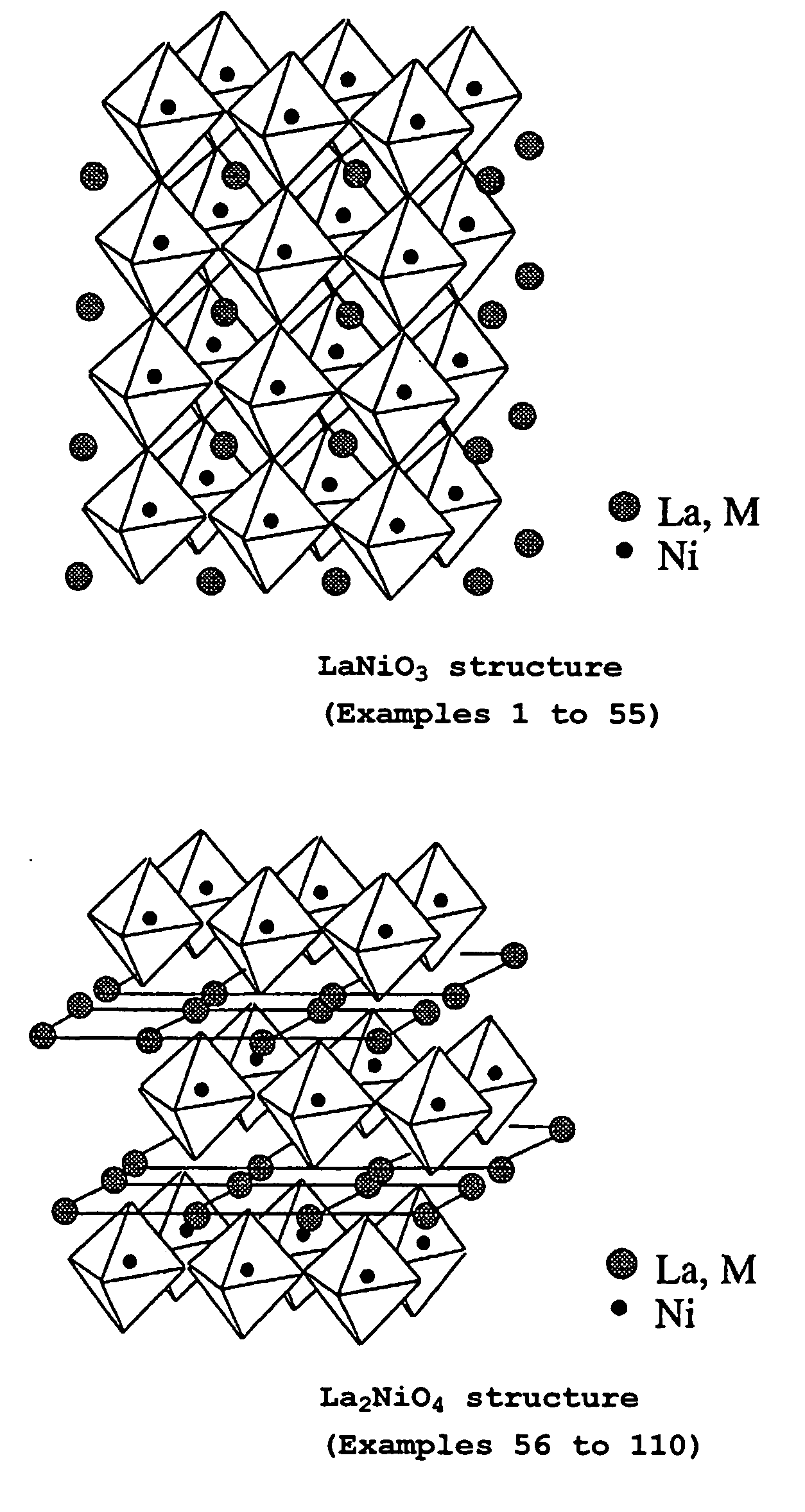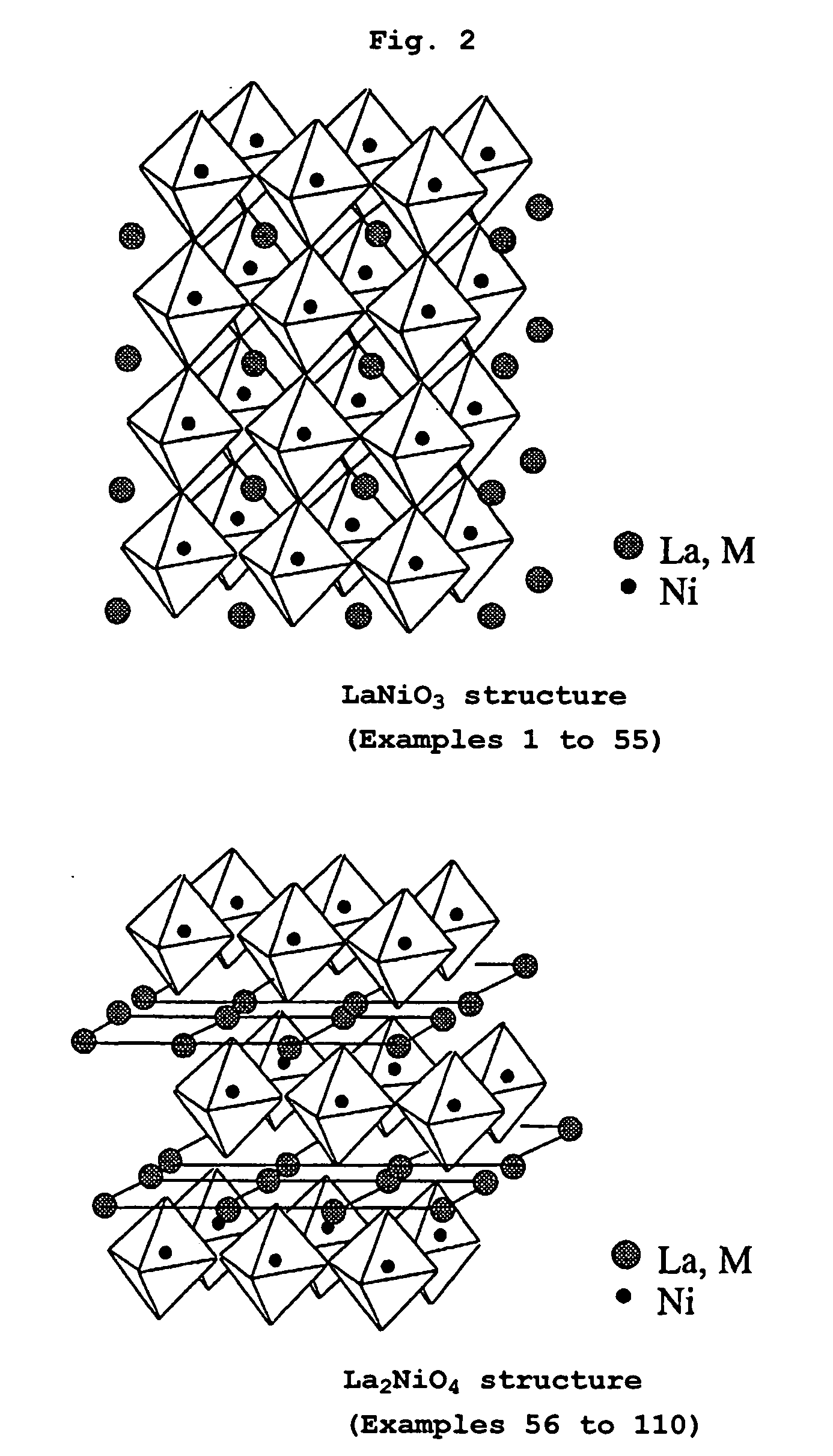Double oxide having n type thermoelectric characteristics
- Summary
- Abstract
- Description
- Claims
- Application Information
AI Technical Summary
Benefits of technology
Problems solved by technology
Method used
Image
Examples
example 1
[0035] Using lanthanum carbonate (La2(CO3)3) as a source of La, nickel oxide (NiO) as a source of Ni, and potassium carbonate (K2CO3) as a source of K, these starting materials were well mixed in a La / Ni / K ratio (element ratio) of 0.8:1.0:0.2. The mixture was placed into an alumina crucible and calcined in the air using an electric furnace at 600° C. for 10 hours to decompose the carbonates. The calcinate was milled and molded by pressing, followed by sintering in an oxygen stream at 920° C. for 40 hours to prepare a complex oxide.
[0036] The complex oxide thus obtained had a composition represented by the formula La0.8K0.2NiO3.2.
[0037]FIG. 4 is a graph showing the temperature dependency of the Seebeck coefficient (S) of the obtained oxide over the temperature range of 100° C. to 700° C. It is apparent from FIG. 4 that the complex oxide has a negative Seebeck coefficient at 100° C. or higher, thus being confirmed to be an n-type thermoelectric material in which the high-temperature...
examples 2-110
[0040] Starting materials were mixed in the La / M / Ni ratios (element ratios) shown in Tables 1 to 4, and the same procedure as in Example 1 was then repeated to provide complex oxides.
[0041] The starting materials were those used in Example 1 and the following materials: sodium carbonate (Na2CO3) was used as a source of Na, lithium carbonate (Li2CO3) as a source of Li, zinc oxide (ZnO) as a source of Zn, lead oxide (PbO) as a source of Pb, barium carbonate (BaCO3) as a source of Ba, calcium carbonate (CaCO3) as a source of Ca, aluminium oxide (Al2O3) as a source of Al, neodymium oxide (Nd2O3) as a source of Nd, bisumuth oxide (Bi2O3) as a source of Bi, and yttrium oxide (Y2O3) as a source of Y.
[0042] The sintering temperature was selected from the range of 850° C. to 920° C. according to the desired complex oxide.
[0043] The complex oxides obtained in Examples 1 to 55 had a perovskite-type LaNiO3 structure in which the La sites were partially substituted by M, whereas those obtaine...
PUM
 Login to View More
Login to View More Abstract
Description
Claims
Application Information
 Login to View More
Login to View More - R&D
- Intellectual Property
- Life Sciences
- Materials
- Tech Scout
- Unparalleled Data Quality
- Higher Quality Content
- 60% Fewer Hallucinations
Browse by: Latest US Patents, China's latest patents, Technical Efficacy Thesaurus, Application Domain, Technology Topic, Popular Technical Reports.
© 2025 PatSnap. All rights reserved.Legal|Privacy policy|Modern Slavery Act Transparency Statement|Sitemap|About US| Contact US: help@patsnap.com



